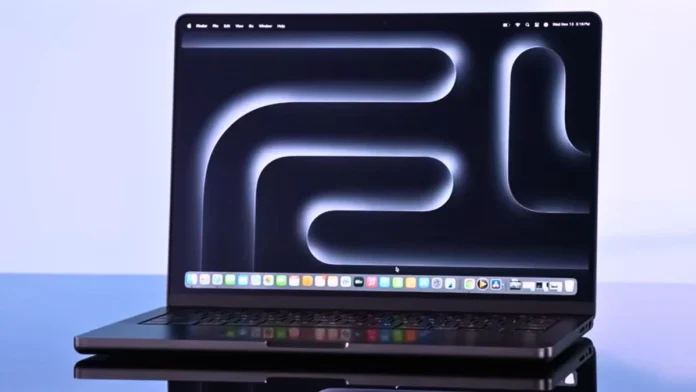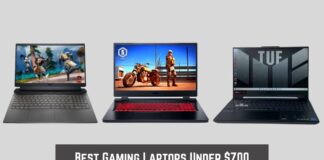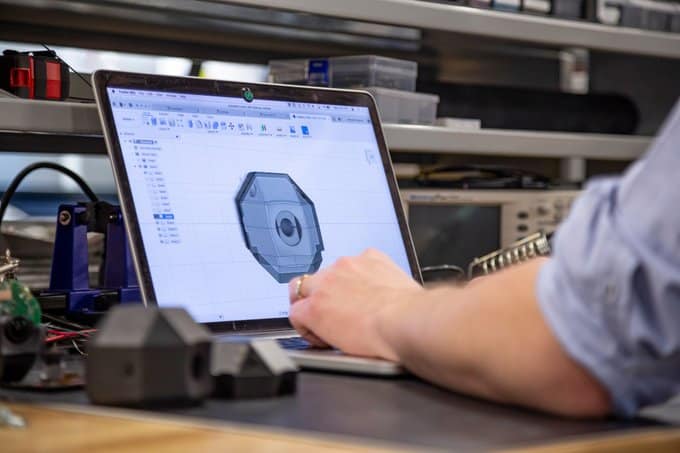Data science is booming, and having a reliable laptop is important for both students and professionals in this field.
Data scientists rely heavily on their laptops for tasks like data cleaning, analysis, and running complex algorithms. Choosing the right laptop can have a significant impact on your productivity and efficiency in this field.
Whether you’re just starting out in data science or you’re a seasoned professional, choosing the right laptop is important. With so many options available, it can be difficult to find the right one for your needs.
In today’s market, there is fierce competition among manufacturers to release the latest and most powerful laptops for data science tasks. But navigating this sea of options can be overwhelming.
In this article, we’ll go into detail about the coding skills required for data scientists, explore the top laptop recommendations for this role, and provide valuable insights to help you make an informed decision.
What to look for in a Laptop for Data Science?
Powerful Processor
A significant amount of computational power is required to run data science algorithms, especially when dealing with large datasets (in the millions) or running complex machine learning models.
To efficiently run these algorithms, look for a laptop with the latest generation and a high-performance processor, such as the Intel Core i7, i9, or AMD Ryzen 7 and 9 processors.
Also Read: What is Processor? Here’s Everything You Need to Know
Dedicated Graphics Card (GPU)
Most laptops have built-in graphics that work fine for regular tasks. But when dealing with massive datasets running complex machine learning, or deep learning tasks on lots of data, you’ll need a special graphics card.
Not all data science jobs need this dedicated graphics card, but it can make machine learning much faster.
People often like the latest NVIDIA graphics cards, like the ones in the latest GeForce or RTX series with at least 4GB VRAM.
Also Read: What to Look for in a Graphics Card? Everything You Need to Know
Sufficient RAM
Data analysis and machine learning can be memory-intensive, especially with noisy, structured, unstructured data.
Choosing a laptop with a minimum of 16GB of RAM is a good idea. Look for RAM that is both the latest and fastest (measured in MHz).
For handling large datasets and complex calculations, 32GB or more is ideal.
Fast and Enough Storage
Data scientists require laptops with fast storage drives to manage and process large datasets efficiently and to train machine learning models that demand rapid data access.
Look for a computer with a minimum of 256GB solid-state drive (SSD) for speedy data access, and 512GB+ will be ideal. For large datasets, consider external storage or cloud solutions for additional space.
Also Read: 13 Best SSD Laptops [Every Budget]
Great Display Quality
A high-quality display is essential for data scientists because it enhances accuracy, efficiency, and comfort while working with data.
When choosing a laptop, look for features like high resolution, wide viewing angles, accurate colors, and low blue light emission to ensure a productive and comfortable work experience.
Look for at least a 13-inch Full HD (1920×1080) or higher-resolution, 60Hz refresh rate screen.
Many laptops come with a standard 15.6-inch display, but if you prefer a larger screen, options are available for data science.
Data Science Laptop Requirements
| Specs | Minimum | Recommended |
|---|---|---|
| Screen | Full HD (1920 x 1080) | Full HD+ (1920 x 1200) or more |
| CPU | 12th Gen Intel Core i3 or equivalent AMD Ryzen 3 | 12th, 13th Gen Intel Core i5, i7 or equivalent AMD Ryzen 5,7 |
| GPU | Intel UHD or equivalent AMD Radeon Vega graphics | NVIDIA GeForce RTX or equivalent AMD Radeon RX series graphics |
| Memory | 4GB | 16GB or more |
| Storage | 128GB SSD | 512GB SSD or more |
| Battery | 2 Hour | 4 hours or more |
| Operating system (OS) | Windows 10 | Windows 11, macOS, or Linux |
What is the best laptop for data science?
Choosing the best laptop depends on your budget and specific needs.
All the laptops we reviewed for running data science algorithms are excellent choices.
In this table, we’ve listed some of the most expensive laptops at the top and more affordable options at the bottom, so if you’re on a budget, consider the more affordable options at the bottom first and work your way up to the most expensive and powerful laptops at the top, and choose accordingly.
| Image | Product | Feature | Price |
|---|---|---|---|
|
TOP Pick
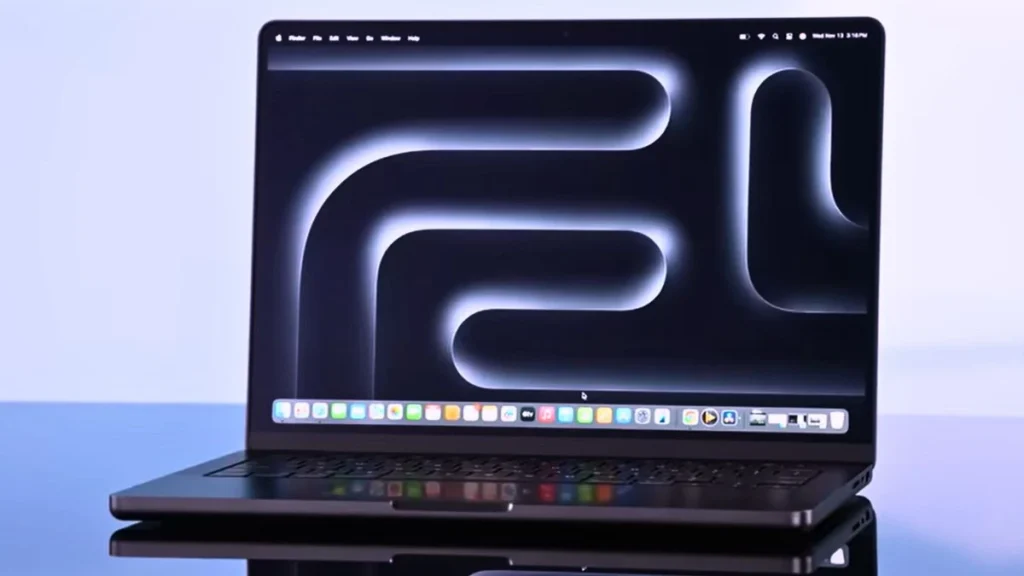
|
Apple MacBook Pro M4
|
|
Check Price |
Best Overall
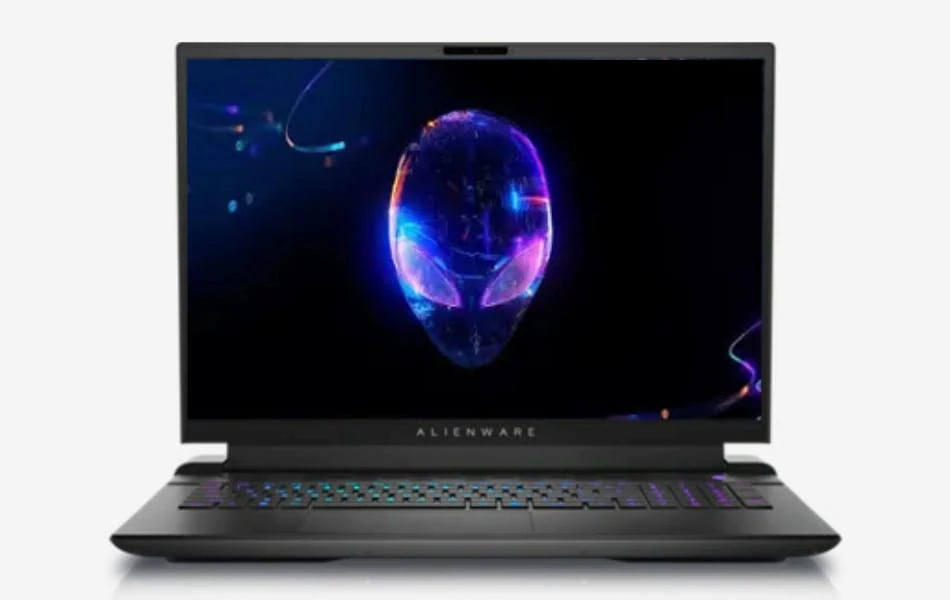
|
Alienware m18 R2
|
|
Check Price |
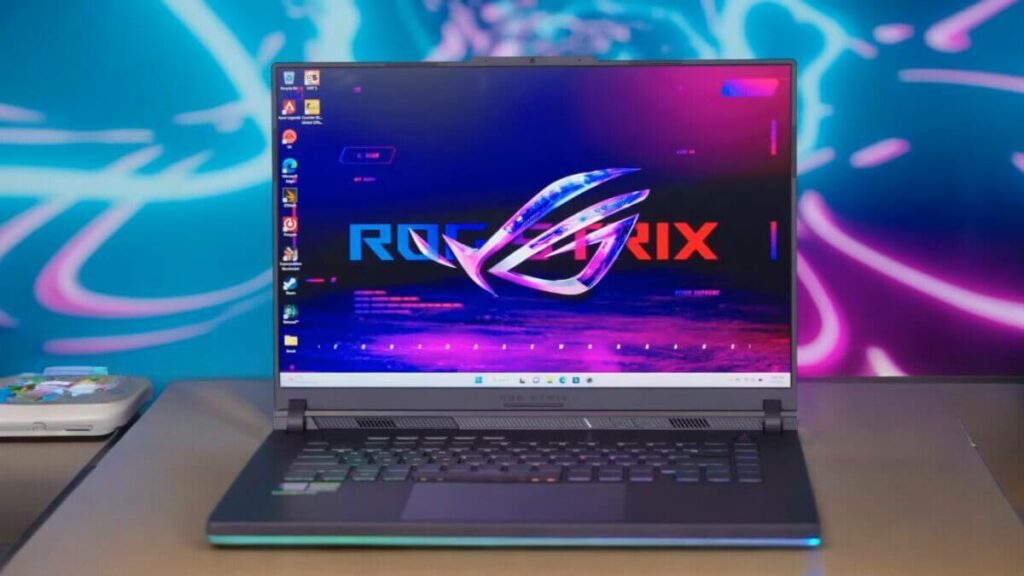
|
ASUS ROG Strix G16
|
|
Check Price |
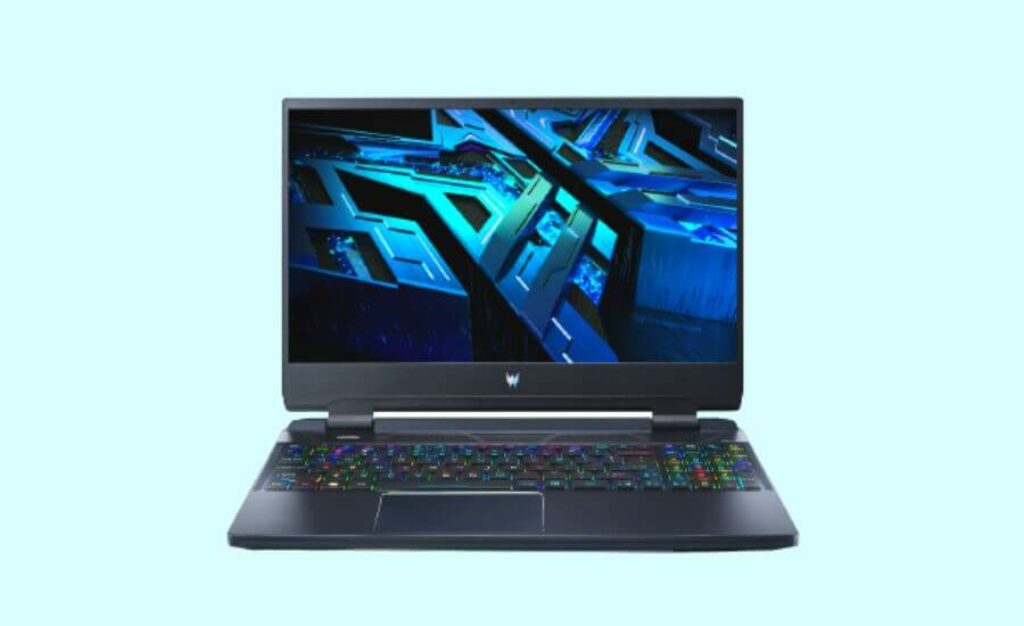
|
Acer Predator Helios 16
|
|
Check Price |

|
Apple MacBook Air M4
|
|
Check Price |
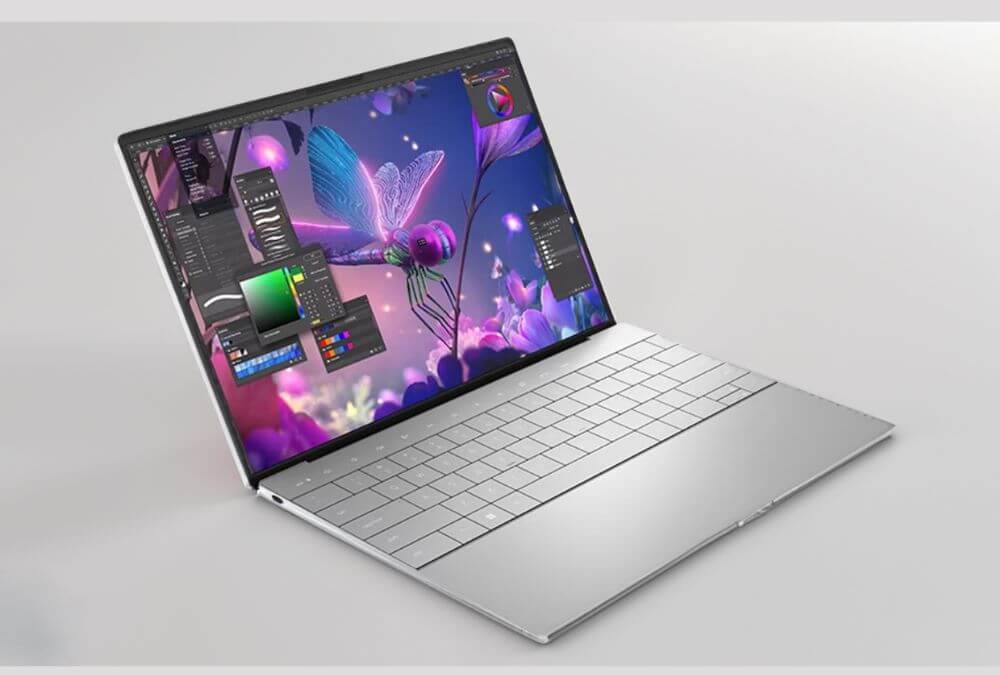
|
Dell XPS 13 Plus
|
|
Check Price |
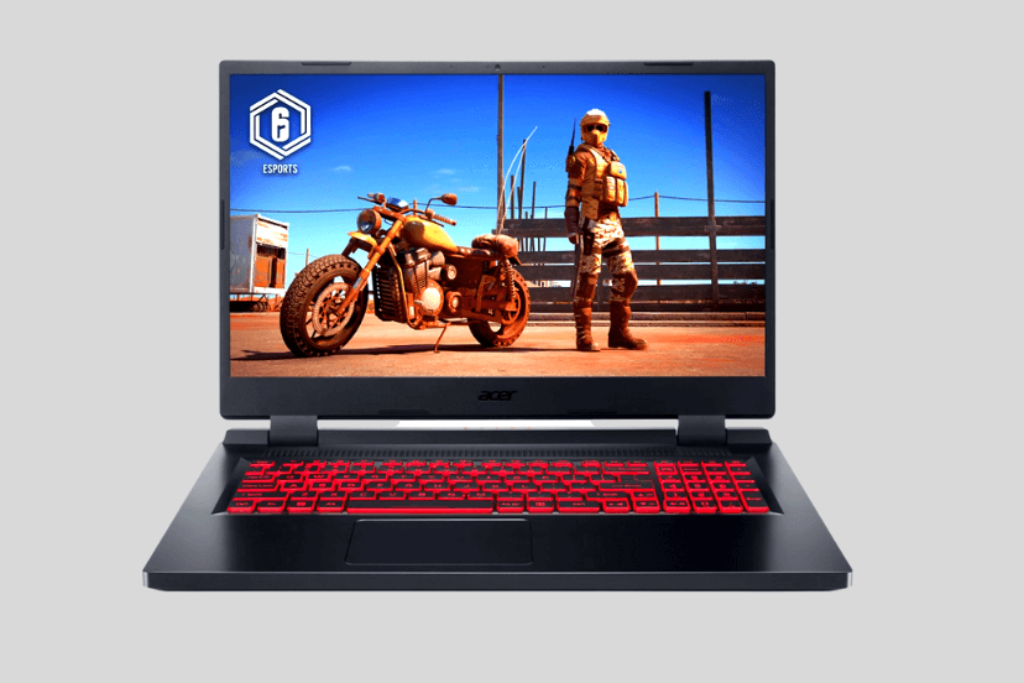
|
Acer Nitro 5
|
|
Check Price |
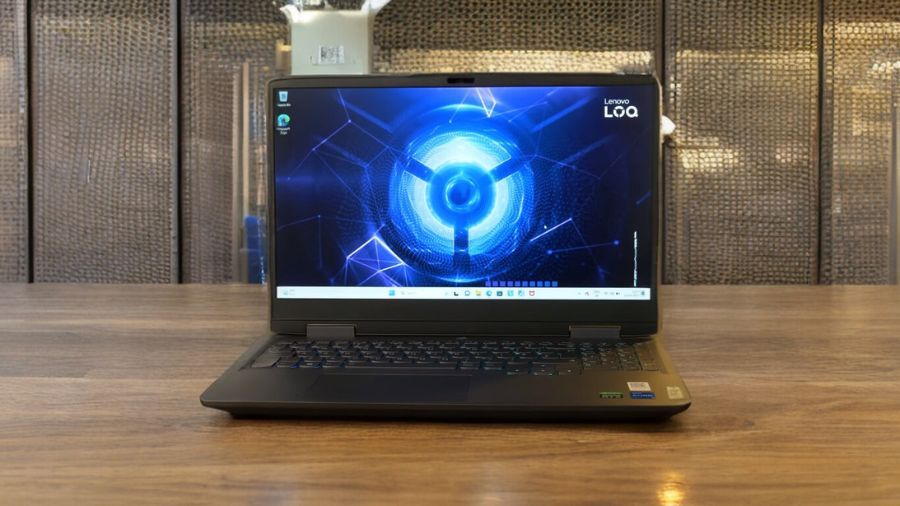
|
Lenovo LOQ 15
|
|
Check Price |
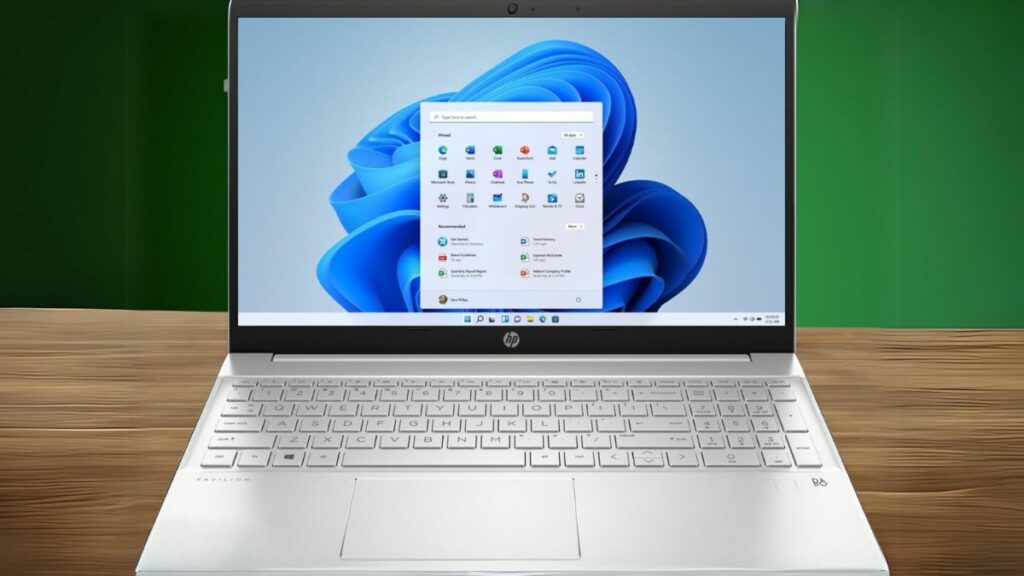
|
HP Pavilion 15
|
|
Check Price |

|
MSI Thin GF63
|
|
Check Price |
1. Apple MacBook Pro M4

Apple offers one of the best laptops for Data Science students, known for its outstanding performance and efficient multitasking.
This sleek MacBook comes with impressive, cutting-edge specifications, thanks to the integration of the new M4 Pro chip.
This high-performance laptop features a 10-core processor, delivering up to 2.8x faster processing than its predecessor, and a 10-core GPU, providing up to 5x faster graphics performance for graphics-intensive tasks. The 16-core Neural Engine boosts machine learning tasks by up to 11x compared to earlier models.
The 14.2-inch Liquid Retina XDR 120 Hz display with mesmerizing 1600 nits of brightness and True Tone tech support delivers vivid colors and excellent visuals, while the ultra-responsive and quiet keyboard enhances the overall typing experience.
Running advanced NLP tasks, like training transformer models, can require much computer power. So, to perform tasks smoothly, it has an active cooling feature that sustains blazing-fast performance, making this Macbook one of the best for Data Science students.
Its plenty of 1 TB SSD storage and 16GB 200GB/s memory enable you to handle demanding multitasking tasks smoothly. This model can be configured with up to 2TB of storage at the time of purchase, thanks to the M4 Pro chip architecture.
It offers an impressive battery life of up to 24 hours on a single charge—one of the best in its class. The 802.11ax Wi-Fi 6E guarantees high-speed wireless connectivity and enables fast data transfers with three Thunderbolt/USB 4 ports and additional connectivity options.
Data science tools and libraries work well on Unix-based systems like Linux or macOS. However, many data scientists also use Windows laptops, so it’s important to choose the one that best supports the tools and software you rely on.
Pros
✔ Exceptional M4 Chip Performance
✔ Stunning Liquid Retina XDR Display
✔ Long Battery Life
✔ Premium Build Quality
✔ MagSafe 3 for Secure Charging
Cons
✘ Expensive for Base Configuration
✘ Fewer Ports Compared to Some Competitors
Read our Apple MacBook Pro M4 Review
2. Alienware M18 R2

The Alienware M18 R2 is one of the newest additions to Alienware’s gaming laptop lineup. With a unique mechanical keyboard, powerful graphics, and a high-performance processor, this unit is a significant upgrade over the previous X15.
The design still has those signature Alien features, and the build quality is at par with the best. Compared to the X15, there are a few differences.
The body is made of solid aluminum, and it’s very sturdy. Talking about its weight, it weighs 9.32 pounds (4.22 kg), so it’s not a lightweight.
Most of the ports are located on the rear side of the laptop. You get two USB-A 3.2 Gen 1 ports, a headphone jack, an Ethernet port, a USB-C 3.2 Gen 2 port, a Thunderbolt port with a display port and power delivery support, an HDMI 2.1 port, and a slot for your microSD card.
The 18-inch QHD+ display with 3ms response time and NVIDIA G-SYNC support is stunning. It offers 100% DCI-P3, but that’s just the tip of the iceberg. This panel offers a 240Hz refresh rate, ideal for smooth gaming and responsive visuals—not necessarily essential for data science tasks.
The Alienware M18 R2 comes with a different graphics unit and core. It has a 14th Gen Intel Core i9-14900HX processor, which is powerful enough for data processing tasks, and NVIDIA GeForce RTX 4080 graphics with 12 GB GDDR6 VRAM to handle deep learning workloads.
The 2.6 GHz clock speed that can be overclocked to 5.8 GHz is more than enough throttle to stand shoulder-to-shoulder with the other components in terms of performance. Its faster clock speeds can greatly reduce the time needed for complex data analysis and machine learning algorithms.
With 32 GB DDR5 5600 MT/s memory and a 1 TB M.2 PCIe NVMe SSD, things will be as snappy for you as they were for me—enough RAM and storage to process high-end applications and store all your important files and documents.
Playing high-end games and performing deep learning and big data processing tasks on the unit certainly takes temperatures to a higher level. However, Alienware’s Cryo-Tech cooling technology maintains system stability and performance.
One of the biggest upgrades to date in this laptop is the mechanical keyboard that delivers a 1.8mm key-travel. Each keystroke feels tactile and satisfying. It has a backlit keyboard and provides per-key AlienFX lighting.
The battery of this unit is quite impressive. It has 6 Cell, 97 Whr, Lithium-ion battery, providing a decent battery life. During gaming, it provides 1–2 hours of battery life.
Alienware M18 R2 has the latest Wi-Fi 6E, Bluetooth 5.3, and is powered by Windows 11 Home operating system.
Pros
✔ Top-tier CPU & GPU (i9-14900HX + RTX 4080)
✔ Fast DDR5 RAM and Gen 4 SSD
✔ Stunning 18″ QHD+ 165Hz display
✔ Advanced Cryo-Tech cooling
✔ Mechanical keyboard with RGB
Cons
✘ Very bulky and heavy (4.2+ kg)
✘ High price point
Read our Alienware M18 R2 Gaming Laptop: Full Specifications and Benchmarks
3. ASUS ROG Strix G16

| CPU (Processor) | 13th Gen Intel Core i7-13650HX (2.6 to 4.9 GHz, 24M Cache, 20 Threads, 14 cores) |
| GPU | NVIDIA GeForce RTX 4060, 6GB GDDR6 |
| RAM | 16GB DDR5 4800 MHz Memory |
| Storage | 512 GB PCIe 4.0 NVMe M.2 SSD |
| Screen | 16-inch, FHD+ 16:10 (1920×1200 pixels), anti-glare display, 100% sRGB, 165Hz |
| Weight | 5.51 lbs (2.5 Kg) |
| Battery | 6 Hours |
| Others | Wi-Fi 6E, Bluetooth 5.3, Windows 11 Home, Backlit Keyboard |
| PROS |
|---|
| ✔ Powerful Processor |
| ✔ Smooth Graphics Performance |
| ✔ Excellent Cooling System |
| ✔ Affordable Price |
| ✔ Great Display with Fewer bezels |
| CONS |
|---|
| ✘ Heavy |
| ✘ No Thunderbolt 4 Port |
The ASUS ROG Strix G15 is the best laptop for Data Science students at its highest possible levels. From the CPU to other powerful components, the computer can easily provide Data visualization, Big data processing, and Statistical analysis tasks.
This is the 13th-generation Intel Core i7-13650HX Processor laptop. It pushes forward with 14 cores and 20 threads, leaving Core i7 and the like way behind. That is evident from its 2.6 GHz clock speed that can be taken up to 4.9 GHz Turbo speed.
ASUS ROG Strix G15 has the NVIDIA GeForce RTX 3060 graphics with 6GB GDDR6 VRAM and can quickly accelerate machine learning and deep learning workloads.
With 16GB RAM and 512GB SSD storage, you can work with larger datasets and run multiple applications. The laptop has you covered in terms of multi-tasking and blazing-fast data transferring.
ASUS ROG Strix G16 has ROG intelligent cooling technology to solve optimization problems using algorithms like genetic algorithms or simulated annealing, and you might need a lot of computer power, resulting in generating more heat.
The Strix features Thermal Grizzly’s Conductonaut Extreme liquid metal on the CPU and has Tri Fan technology with total surround vents to cool down your laptop.
Even in terms of display, the panel is a 16-inch treat to the eyes, with bezels almost non-existent. The FHD+ display portrays true colors and covers a 100% sRGB color gamut, coupled with the 165 Hz refresh rate.
The design is otherworldly and has an aluminum chassis on the top. The weight is 5.51 pounds (2.5 Kg), and you can take it anywhere.
ASUS ROG Strix G16 has a backlit keyboard. The RGB keyboard has two color areas and many options in the ASUS ROG app. There’s no Numpad, and none needed to be honest.
A good internet connection using Wi-Fi 6 or Ethernet is crucial for getting big datasets and accessing cloud resources. It has Wi-Fi 6E and Bluetooth 5.3 wireless connections. Talking about ports, it has two USB-A 3.2 ports, two USB 3.2 Gen 2 Type C ports with Thunderbolt 4, an HDMI, an Ethernet, and an audio jack.
Read our ASUS ROG Strix G16 Gaming Laptop Review
4. Acer Predator Helios 16

Specifications
| CPU (Processor) | 13th Gen Intel Core i7-13700HX Processor (16 MB Cache, 8-core, 2.3Ghz to 5.0Ghz) |
| GPU | NVIDIA GeForce RTX 4060 8GB GDDR6 |
| RAM | 16GB DDR5 4800MHz |
| Storage | 1TB Gen 4 SSD |
| Screen | 16-inch QHD+ (2560 x 1600) LED-backlit IPS Display, 165Hz refresh rate |
| Weight | 5.73 lbs (2.59 KG) |
| Battery Life | Up to 6 hours |
| Others | Thunderbolt 4, Wi-Fi 6E, Bluetooth 5.0, Windows 11 Home, RGB Backlit keyboard |
| PROS |
|---|
| ✔ Affordable and powerful laptop |
| ✔ Ultrafast 1TB SSD |
| ✔ Great performance |
| ✔ Good battery life for a 16-inch gaming laptop |
| ✔ RGB Backlit keyboard |
| ✔ 240 Hz Refresh rate |
| ✔ DTX Audio |
| CONS |
|---|
| ✘ Little bit Heavy |
Having a great keyboard layout, top-tier graphics card, snappy fast processor, and ultra-fast refresh rates is enough to keep one bewitched, which this monster laptop satisfies wholeheartedly; what more can you ask at such an affordable price point?
The Acer Predator Helios 16 has all the goodies under and over its hood in its compact design.
This laptop is designed for hardcore gamers and high-end performance tasks. Because this laptop rocks, it has a 16-inch QHD+ LED-backlit IPS display with a screen resolution of 2560 x 1600 and a 165hz refresh rate with a 3 millisecond response time.
This laptop gives you more space on the screen for complex data projects, making it easier to use data visualization and analytics tools, making it one of the best laptops for Data Science students.
It has a 13th-generation Intel Core i7-13700HX Processor with a base clock speed of 2.3 GHz and can rev up its maximum clock speeds to 5.0 GHz.
The laptop also comes with a massive power-hungry dedicated graphics card, NVIDIA GeForce RTX 4060, which has 8GB GDDR6 VRAM and 16GB of DDR5 RAM with 4800 MHz of frequency to ensure you get the maximum possible speeds without bottlenecking the performance and enough storage capacity of 1TB Gen 4 Solid-state drive to contain all your precious files and your favorite games.
This laptop has a lovely RGB backlit comfortable keyboard, which can be fully customized. Moreover, the typing experience is extremely pleasant, and the touchpad is positioned strategically to ensure maximum comfort for the user.
Its cooling technology can cool the laptop well while performing parallel computing, like running multiple processes simultaneously.
The Acer Predator Helios 16 is also packed with plenty of user interfaces such as two USB Type-C ports with Thunderbolt 4 support, an Ethernet jack for wired internet connection, three USB Type-A, an HDMI port, an audio combo jack, and a Micro SD card reader. The laptop also supports the latest WI-FI 6 technology, which delivers data with minimal input lag.
There are plenty of power-hungry components, such as the NVIDIA GeForce RTX 4060, which has rendered the lithium battery on the laptop to perform way less than expected. This laptop weighs 5.73 pounds (2.59 Kg) and will last roughly 6 hours on normal usage.
Read our Acer Predator Helios 16 Review
5. Apple MacBook Air M4

This is the ultimate choice for Data Science students like you. It is Apple’s best machine in terms of battery life, performance, and build quality — unquestionably one of the best laptops for data science students.
This MacBook Air is powered by the M4 chip, known for its excellent battery efficiency and performance. A longer-lasting battery lets you work on data science projects without staying close to a power source. If you’re often on the move, this MacBook offers up to 18 hours of battery life, making it ideal for mobile work.
A 10-core CPU delivers 1.4x faster performance than the MacBook Air (M1), a 10-core GPU handles graphics-intensive tasks up to 5x faster, and the 16-core Neural Engine accelerates machine learning applications.
In addition, 16GB of unified memory and a 512GB SSD ensure fast boot times and seamless multitasking.
When you adjust machine learning models with different settings, doing many experiments can use a lot of CPU power. Yet, the Apple MacBook Air M4 is fully optimized and runs cool even with a fanless design.
The 13.6-inch Liquid Retina Display, featuring True Tone, 500 nits of brightness, and P3 wide color, delivers incredibly sharp and vivid visuals.
The 1080p FaceTime HD Camera has a tri-mic array for crystal-clear communications.
Is MacBook Air good for data analysis?
The Apple MacBook Air with the M4 chip is an excellent choice for data science students and analysts. It’s like a powerful laptop with a long-lasting battery, perfect for working on data projects anywhere.
It’s fast and reliable for running complex data tasks — and remains cool during extended use. The screen shows things in amazing detail and is excellent for video conferencing.
| PROS |
|---|
| ✔ Sleek and ultra-portable design |
| ✔ Long-lasting battery life |
| ✔ Upgraded webcam (12MP Center Stage) |
| ✔ Exceptional performance with the new M4 chip |
| ✔ Fanless design for quiet operation |
| CONS |
|---|
| ✘ No dedicated GPU for heavy gaming |
| ✘ No USB Type-A port |
Read Apple MacBook Air M4 Full Specifications and Review
6. Dell XPS 13 Plus

Specifications
| CPU (Processor) | 13th Gen Intel Core i7-1360P (18 MB cache, 16 threads, 12 cores, up to 5.00 GHz Turbo) |
| GPU | Intel Iris Xe Graphics |
| RAM | 16 GB LPDDR5, 6000 MT/s |
| Storage | 512 GB M.2 PCIe NVMe SSD |
| Screen | 13.4-inch FHD+ (1920×1200) 60Hz, Touch, Anti-Reflect, 500 nits, InfinityEdge |
| Weight | 2.77 lbs (1.26 kg) |
| Battery Life | 3 Cell, 55 Wh, 60W AC Adapter Type-C |
| Others | Wi-Fi 6E, Bluetooth 5, Windows 11 Home, Backlit keyboard, Fingerprint reader |
| PROS |
|---|
| ✔ Affordable Price |
| ✔ Latest and Powerful Processor |
| ✔ Excellent Battery Life |
| ✔ Secure Fingerprint Reader |
| ✔ Great Cooling Management |
| ✔ Ultra Slim and Portable |
| CONS |
|---|
| ✘ Refresh Rate Could be More |
| ✘ Average Graphics for 3D Rendering |
Data Science requires focus, sheer will, and commitment, and having lousy equipment on your hands is never a good idea if you want to reach the apex.
The Dell XPS 13 Plus is a perfect fit since it has everything you need.
Since viewing your projects and working on them all day and even at night is tiring, this laptop has a 13.4-inch FHD+ display to prevent withering. It has an InfinityEdge 60 Hz display, which makes the screen look even more spacious.
Moreover, the 1920×1200 resolution is reinforced with touch capabilities to add convenience and versatility. The screen is backed by 500 nits brightness to deliver a refreshing dose of colors you never had before.
As for what’s under the hood, the latest 13th-generation Intel Core i7-1360P does a phenomenal job with its 12-core and 16 threads to provide a seamless experience, all thanks to its 18MB cache memory and a 5.0Ghz turbo boost, which makes running complex data analysis and machine learning algorithms much faster.
Dell XPS 13 Plus even has a crazy fast 16 GB LPDDR5 RAM, clocked at 6000 MT/s frequency to provide you the fastest speed possible. And since being a student means you would want to store all your files, documents, images, and projects securely in one place, this highly productive machine has 512 GB M.2 PCIe NVMe SSD storage in its belly.
Laptops are quite known for convenience, and blazing-fast wireless features empower them, which is why the manufacturer has also integrated the latest Wi-Fi 6E and Bluetooth 5.2.
The first steps of cleaning and changing data can use many resources, especially with big datasets. So, it has an excellent cooling function to keep your system cooler with increased fan speed.
As for keyboard layout and design, it has a smooth, touch-friendly keyboard and Zero-lattice Keyboard, providing a comfortable touch typing experience. On the contrary, it does have a Platinum backlit keyboard with a fingerprint reader, so that’s pretty handy.
In terms of connectivity, the Dell XPS 13 Plus has only two Thunderbolt 4 USB-C ports with DisplayPort and Power Delivery support. It has a USB-C to USB-A 3.0 adapter and a USB-C to 3.5mm headset adapter included in the box for faster connections.
Dell XPS 13 Plus has a 3-cell, 55 Wh battery with a 60W AC Adapter (Type-C) and mind-blowing runtime on mixed-use, which is magnificent. The battery recharges to 80% in less than an hour with ExpressCharge.
7. Acer Nitro 5

CHECK Today’s Best Deals
Specifications
| CPU (Processor) | 12th Gen Intel Core i5-12500H (6 cores, 12 threads, Boost up to 4.5 GHz) |
| GPU | 4GB NVIDIA GeForce RTX 3050 |
| RAM | 8GB DDR4 3200MHz |
| Storage | 512GB NVMe Gen 4 SSD |
| Screen | 15.6-inch full HD (1920 x 1080) widescreen LED-backlit IPS display |
| Weight | 5.51 lbs (2.5 kg) |
| Battery Life | Up to 7 hours |
| Others | Red Backlit Keyboard, Thunderbolt 4, Wi-Fi 6, Bluetooth 5.1, Windows 11 Home |
| PROS |
|---|
| ✔ Strong Build Quality |
| ✔ Smooth Graphics Performance |
| ✔ Powerful CPU with Powerful GPU |
| ✔ Great Backlit Keyboard |
| ✔ Cheap Price |
| CONS |
|---|
| ✘Bulky Design |
| ✘Noisy Fan |
Acer Nitro 5 has heavy-duty hardware specifications and a 144hz refresh rate screen, so it is worth every penny of investment.
If you are looking for a high-performance laptop for Complex Data Visualization with a fast and minimal input lag display, look no further, as the Acer Nitro 5 has a 15.6 Full HD IPS display panel with a maximum display resolution of 1920 x 1080 pixels.
The laptop also comes with a powerful graphics card from the NVIDIA Lineup and the NVIDIA GeForce RTX 3050, which can accelerate deep learning workloads and ensure you play your favorite games at higher resolutions with little to no frame rate compromise.
The laptop also has a 12th generation Alder Lake chip, the Intel Core i5-12500H, which has a six-core processor and 12 threads that support multi-threading, making it suitable for things other than gaming, such as big data processing, text mining, video editing, rendering, etc.
It also has 8GB DDR4 RAM and 512GB NVMe Gen 4 SSD storage space. Since it has SSD storage, it can quickly get your data, minimize application loading time, and improve your laptop’s overall responsiveness.
Running complex simulations or mathematical models can be computationally intensive, so it has a dual fan cooling technology and a quad-exhaust port to move hot air out.
To connect to external projectors and larger screens, the laptop has an HDMI 2.1 port and the latest Wi-Fi 6 and Bluetooth 5.1 for wireless connectivity. Speaking of ports, it has four USB Type-A ports and one USB Type-C port.
The Acer Nitro 5 comes with a lithium-ion battery and delivers excellent battery backup of up to 7 hours, and it has a Red backlit keyboard to work in dim light as well.
Read our Acer Nitro 5 Review
8. Lenovo LOQ 15

CHECK Today’s Best Deals
Specifications
| CPU (Processor) | 13th Gen Intel Core i5-13420H (8 core, 12MB cache, 12 threads, 3.40GHz to 4.60GHz) |
| GPU | NVIDIA GeForce RTX 3050, 6GB GDDR6 VRAM |
| RAM | 16GB DDR5 RAM 5200 MHz |
| Storage | 1TB M.2 PCIe Gen4 SSD |
| Screen | 15.6″ FHD (1920 x 1080), IPS, Anti-Glare, 350 nits, 144Hz, LED Backlight, Narrow Bezel |
| Weight | 5.28 lbs (2.4 kg) |
| Battery | 60Whr, 4-cell, Lithium-polymer (up to 7 Hours) |
| Others | Backlit Keyboard, Wi-Fi 6E, Bluetooth 5, Windows 11 Home |
| PROS |
|---|
| ✔ Powerful Gaming Laptop |
| ✔ Smooth Graphics Performance |
| ✔ 1080p FHD Webcam |
| ✔ Solid Build Quality |
| ✔ Latest wireless connectivity |
| CONS |
|---|
| ✘ Little bit Heavy |
| ✘ No Thunderbolt Port |
Lenovo LOQ 15 has a sturdy, strong chassis and a fully customizable keyboard. The Intel technology rendered me spellbound as every aspect of this laptop calls for premium quality, and it is tough not to keep things free from bias.
Its fast 15.6-inch display offers a Full HD experience, and watching movies on the 1920 x 1080p resolution gives off a splendid feel to the eyes of viewers.
What makes it so special is that the screen has sharp visual output. Moreover, the 144hz refresh rate minimizes blurring in competitive video games and can provide smoother and more responsive visuals.
The 8-core processor of Intel Core i5-13420H can handle multitasking with its lightning-fast processing. You can be assured that the Lenovo LOQ 15 can handle powerful tasks with ease with super snappy processing speeds combined with dedicated NVIDIA GeForce RTX 3050 graphics, which has a whopping 6GB GDDR6 VRAM that accelerates machine learning and deep learning workloads.
It has 16GB DDR5 RAM with 5200 MHz memory to minimize the stutters and frame rate drops.
Moreover, the laptop has a massive 1TB M.2 PCIe Gen4 SSD storage capacity to keep all your files, operating system, and games for faster transfer rates and minimal boot times.
In addition, the laptop has a unique cooling feature with two high-speed fans and bigger openings, ensuring quiet and powerful cooling.
Designed for durability, the keyboard is robust and features a premium finish. Additionally, the backlit keyboard enables you to work in low-light conditions.
The keys are equipped with 100% anti-ghosting technology and have a 1.5mm key travel, providing a tactile and responsive typing experience.
Talking about ports, it has three USB-A 3.2 ports, a USB Type-C port, an HDMI port, an Ethernet port, and a super speedy power jack that charges the 60Whr lithium-polymer battery very fast.
The power department is a bit flawed with shorter battery life, as it can only produce runtimes up to 7 hours while having the WIFI turned on and screen brightness to 50%.
Lenovo LOQ 15 is powered by Windows 11 Home.
Read our Lenovo LOQ 15 Gaming Laptop Review
9. HP Pavilion 15

Specifications
| CPU (Processor) | 13th Gen Intel Core i5-1335U (1.3 GHz to 4.6 GHz, 10 cores, 12 threads, 12 MB cache) |
| GPU | Intel Iris Xe Graphics |
| RAM | 16 GB DDR4 RAM |
| Storage | 512GB PCIe SSD |
| Screen | 15.6-inch FHD (1920 x 1080) Touchscreen BrightView IPS Micro-edge Display |
| Weight | 3.86 lbs (1.75 Kg) |
| Battery Life | 3-cell, 41 Whr, Lithium-ion (6.5 Hours) |
| Others | Backlit Keyboard, Wi-Fi 6E, Bluetooth 5.3, Windows 11 Home |
| PROS |
|---|
| ✔ Enough RAM and Storage |
| ✔ Latest and Powerful Processor |
| ✔ Latest Wi-Fi 6E |
| ✔ Affordable Price |
| ✔ Great Design and Portable |
| CONS |
|---|
| ✘ Battery Could Be Better |
| ✘ No Thunderbolt Port |
The all-new HP Pavilion 15 is equipped with the latest 13th-generation Intel i5-1335U processor, boasting 10 cores, and an integrated Intel Iris Xe graphics card.
With 16 GB of DDR4 RAM and a 512GB PCIe SSD, the laptop offers the flexibility to upgrade RAM and storage to meet evolving data science requirements.
The HP Pavilion 15 boasts a 15.6-inch FHD Touchscreen BrightView IPS Micro-edge display with a screen resolution of 1920 x 1080, providing an exceptional visual experience, ideal for tasks like text mining.
Data cleaning and preprocessing, especially with large datasets, can be resource-intensive and potentially heat your laptop, but the built-in fan helps manage the temperature.
The laptop is powered by a 3-cell, 41 Whr, Lithium-ion battery, delivering a reliable battery life of up to 6 hours and 30 minutes, which should be sufficient for mixed-use scenarios in this price range.
Weighing just 3.86 pounds (1.75 kg), the HP Pavilion 15 is highly portable, making it easy to travel.
Regarding ports and connectivity, it features Wi-Fi 6E and Bluetooth 5.3 for wireless connections. On the port side, you’ll find one HDMI 2.1, one USB Type-C port, two USB Type-A ports, a Headphone/Microphone Combo Jack, and an AC Smart Pin.
The laptop comes equipped with a full-sized backlit keyboard with a numeric keypad, enabling comfortable night-time work, and it runs on Windows 11 Home.
Read our HP Pavilion 15 Review
10. MSI Thin GF63

Specifications
| Processor | 12th Gen Intel Core i5-12450H (8 Core, 1.3-4.5 GHz) |
| Graphics | NVIDIA GeForce RTX 2050 |
| RAM | 8GB DDR4 3200MHz Memory |
| Storage | 512GB NVMe SSD |
| Screen | 15.6-inch FHD IPS LED-backlit 144Hz Display |
| Weight | 4.10 lbs (1.86 kg) |
| Battery Life | Up to 6 hours |
| Others | Backlit Keyboard, Wi-Fi 6, Bluetooth 5.1, and Windows 11 Home OS |
| PROS |
|---|
| ✔ DLSS support with the potent RTX 4050 GPU |
| ✔ Handles most games smoothly |
| ✔ Lightweight for its size |
| ✔ Easily upgradeable for future gaming needs |
| CONS |
|---|
| ✘ Screen is not very bright. |
| ✘ Gets hot when playing games. |
| ✘ Battery life is just okay, not great. |
Budget restrictions are one of the painful causes of having your dreams to create your career in data science shattered, but what if I tell you there is a workaround? The MSI GF63 is here to save the day and will ensure you play your games without hurting your financial standings. It is one of the most affordable options for data science students.
However, MSI Thin GF63 has a super-efficient Max-Q designed NVIDIA GeForce RTX 2050 that delivers buttery smooth frame rates.
Moreover, to keep things from getting bottlenecked, this laptop has 12th-generation Intel Core i5-12450H, which has 8 cores and 12 threads and ensures seamless multitasking, all credits due to the 12MB smart cache and 4.5 GHz clock boost.
It has 8GB DDR4 RAM with 3200Mhz memory and 512GB NVMe SSD, so it is easy to determine whether or not this laptop is fit for data science students. Though RAM is less, you can upgrade it up to 32 GB. Having more RAM in your computer lets you work with bigger data sets and use multiple applications simultaneously. If it had 16GB or more of RAM, it would have been really helpful for doing data science tasks well.
As for the display, it has a 144hz refresh rate, and the viewing experience, even from odd angles on the 15.6-inch Full HD IPS screen, delivers results beyond your imagination.
The overall experience with the MSI GF63 is quite splendid, and it even has plenty of ports, such as one USB Type-C port, three USB 3.2 Type-A ports, an Ethernet port, an HDMI port, and an audio combo jack to connect your gaming headset. There is no Thunderbolt port.
It is a portable laptop and weighs only 4.10 pounds (1.86 kg). The battery backup of this laptop is up to 6 hours upon regular use and is powered by Windows 11 Home.
Read our MSI Thin GF63 Gaming Laptop Review
How to choose the best laptop for a data scientist?
Before choosing any laptop for a data scientist, you should consider some essential factors.
Processor
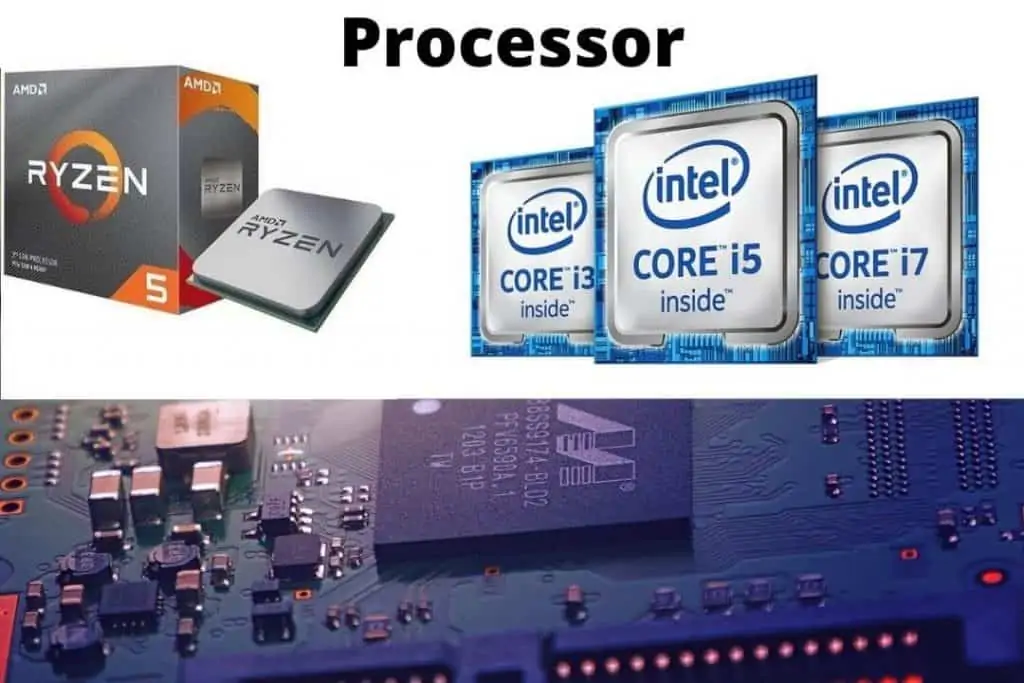
The processor is like the boss of a computer. It’s in charge of making everything work. When you buy a laptop for data science, it’s important to get a good and latest-generation processor.
Why a powerful processor is needed in a laptop for data science?
In data science, you do tricky math and work with big data sets. A powerful processor helps you do this math quickly.
Here’s when you need a strong processor for data science:
- Cleaning and preparing data.
- Training smart computer models.
- Doing math and stats.
- Making data look pretty.
- Using smart models for real-life stuff.
Having a strong processor helps you work faster and better in data science, making it easier to find answers in data and solve tough problems.
What is the best processor for data science?
The best processor for data science depends on your specific needs and budget. However, high-performance processors with multiple cores and threads are often ideal for data science tasks.
For advanced notebooks
Latest generation:
- Intel Core i9
- AMD Ryzen 9
- Intel Xeon W-3000 Series
For mid-range laptops
Latest generation:
- Intel Core i7
- AMD Ryzen 7
- Intel Xeon W-2000 Series
For cheap laptops
Latest generation:
Data science involves complex mathematical calculations such as statistical analysis, matrix operations, and machine learning algorithms.
Training machine learning models, especially deep learning models, is computationally intensive. The powerful processor accelerates model training, reducing the time required for experiments and model development.
Graphics Card
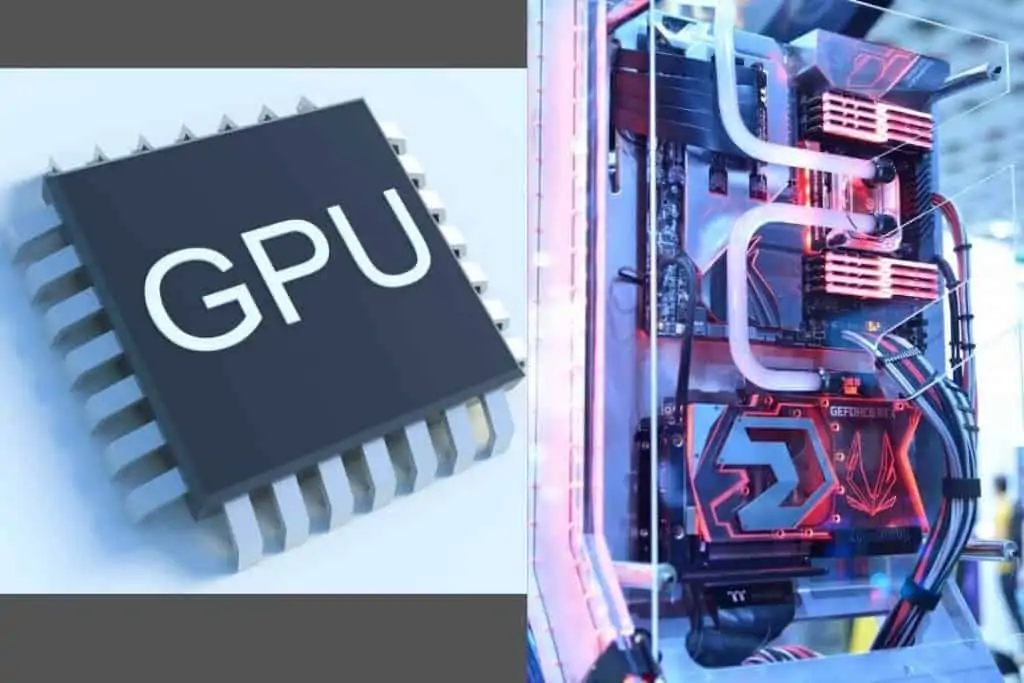
Choose a good graphics card that can handle programming, gaming, and other heavy tasks well. If you pick a powerful one from the beginning, your laptop will work smoothly for at least the next three to four years.
Choosing a graphics card for a data science laptop involves considering specific tasks like machine learning, data visualization, and basic data analysis.
Deep learning tasks, being more demanding, require a dedicated GPU. Look for laptops with dedicated NVIDIA or AMD Radeon GPUs, preferably RTX series, for optimal performance. Options like NVIDIA GeForce RTX 4000 series or AMD Radeon RS 6800 excel but are pricier. The NVIDIA GeForce 3000 series or AMD Radeon RS 6700 series are cost-effective for less intensive tasks.
Check for CUDA and Tensor Cores, which are crucial for tasks in frameworks like TensorFlow. They are particularly useful for training neural networks.
Higher VRAM aids in running machine learning algorithms and enhancing deep learning techniques.
Consider the GPU architecture for optimized performance and ensure compatibility with specific data science tasks and frameworks like TensorFlow, PyTorch, etc.
Recommended Laptop/PC Requirements for Running APPs related to Data Science
The minimum and recommended laptop/computer requirements will depend on the data size you are working with and the time it takes. The following requirements are for general purposes only. You will need more powerful components if you are running large amounts of data.
Python with Jupyter Notebooks System Requirements
| Component | Minimum Requirement | Recommended Requirement |
|---|---|---|
| Operating System | Windows, macOS, or Linux | Windows, macOS, or Linux |
| Processor | Intel Core i3 or equivalent with 1GHz or higher | Intel Core i5 or equivalent with 2GHz or higher |
| RAM | 2GB | 4GB |
| Disk Space | 10GB | 20GB |
| Graphics Card | Not required | Not required (recommended for data visualization or machine learning tasks) |
RStudio System Requirements
| Component | Minimum Requirement | Recommended Requirement |
|---|---|---|
| Operating System | 64-bit Windows, macOS, or Linux | 64-bit Windows, macOS, or Linux |
| Processor | Intel Core i3 or equivalent with 2GHz or higher | Intel Core i5 or equivalent with 2.5GHz or higher |
| RAM | 1GB | 2GB |
| Disk Space | 500MB | 2GB |
| Graphics Card | Not required | Not required (recommended for data visualization) |
Anaconda System Requirements
| Component | Minimum Requirement | Recommended Requirement |
|---|---|---|
| Operating System | Windows 7 or later, macOS, or Linux | Windows 10 or later, macOS, or Linux |
| Processor | Intel Core i3 or equivalent with 2 GHz dual-core or faster | Intel Core i5 or equivalent with 4 GHz quad-core or faster |
| RAM | 4 GB | 8 GB |
| Disk Space | 3 GB | 10 GB |
| Graphics Card | Not required | NVIDIA GTX 960 or equivalent |
Spyder System Requirements
| Component | Minimum Requirement | Recommended Requirement |
|---|---|---|
| Operating System | Windows 10 (64-bit), macOS 10.14 (Mojave) or later, or Linux 64-bit | Windows 11 (64-bit), macOS 12.3 (Monterey) or later, or Linux 64-bit |
| Processor | 2 GHz or higher | 3 GHz or higher |
| RAM | 4 GB | 8 GB |
| Disk Space | 5 GB | 10 GB |
| Graphics Card | Not required | NVIDIA GTX 960 or equivalent |
TensorFlow and PyTorch System Requirements
| Component | Minimum Requirement | Recommended Requirement |
|---|---|---|
| Operating System | Windows 7 or later, macOS 10.13 (High Sierra) or later, or Linux 64-bit | Windows 10 or later, macOS 11 (Big Sur) or later, or Linux 64-bit |
| Processor | 2 GHz dual-core or faster | 3 GHz quad-core or faster |
| RAM | 4 GB | 8 GB |
| Disk Space | 5 GB | 10 GB |
| Graphics Card | Not required | NVIDIA GTX 960 or equivalent |
SQL Databases System Requirements
| Component | Minimum Requirement | Recommended Requirement |
|---|---|---|
| Operating System | Windows 64-bit, Linux 64-bit, or macOS 64-bit | Windows 64-bit, Linux 64-bit, or macOS 64-bit |
| Processor | Intel Core i3 or equivalent | Latest Gen Intel Core i5 or equivalent |
| RAM | 4 GB | 8 GB |
| Disk Space (Free) | 10 GB | 20 GB |
| Graphics Card | Not required | Not required |
Tableau System Requirements
| Component | Minimum Requirement | Recommended Requirement |
|---|---|---|
| Operating System | Windows 64-bit or macOS | Windows 64-bit or macOS |
| Processor | Intel Core i3 or equivalent | Latest Gen Intel Core i5 or equivalent AMD |
| RAM | 4 GB | 8 GB |
| Disk Space (Free) | 10 GB | 20 GB |
| Graphics Card | 1024×768 resolution with true color | Discrete graphics card with 1GB of VRAM |
Tableau can work for multiple users simultaneously; for this, you will need more RAM in your laptop or computer because the load will be higher when multiple users work.
What data size you want to work with also matters; if there is more data, more processing and memory will be required.
Another important point is that if you work on more complex visualizations like map search, you will need more processing power and memory in your laptop or PC.
FAQs
You don’t have to use a gaming laptop for data science, but they can be perfect. Gaming laptops usually have strong processors, exceptional graphics, and good cooling, which greatly help when working with big datasets and doing machine learning.
But there are also non-gaming laptops that work well for data science. They’re powerful enough for tasks like coding in Python for machine learning.
A data scientist requires a high-end laptop because it contains millions of data of machine-learning algorithms.
For students, it’s common to have a tight budget, so they may need more money to afford expensive, high-end laptops. In such cases, a mid-range or budget laptop works well for coding in data science. Students who have to work with very large datasets can use the computers in their university or college lab.
Apple MacBook Pro with M4 pro chip and Alienware X16 R1 is the best laptop for a data scientist.
Apple MacBook with M4 Pro Chip: Features a 10-core processor and 10-core GPU for fast data science tasks. It offers a stunning display, efficient multitasking, and an 24-hour battery life.
Alienware X16 R1: A powerful Windows laptop with an Intel Core i9 processor, NVIDIA RTX 4080 graphics, and a 16-inch QHD+ display with a 240Hz refresh rate. It is ideal for data processing and deep learning tasks.
Final Words
Selecting the right laptop for data science requires thoughtful consideration of both components and budget constraints. Start by understanding the nature of your work, the functions required, and the software required.
To ensure optimal performance, prioritize key hardware components like a powerful processor, ample RAM, fast storage, and a capable graphics card. Additionally, consider factors like display quality and battery life while balancing your budget.
For tasks like machine learning and data visualization, investing in a laptop with robust components ensures smooth operation and future security. Our guide identifies essential components tailored to performance features and price, making your decision-making process simple. Choose the most suitable and cost-effective option based on your specific needs and budget.
